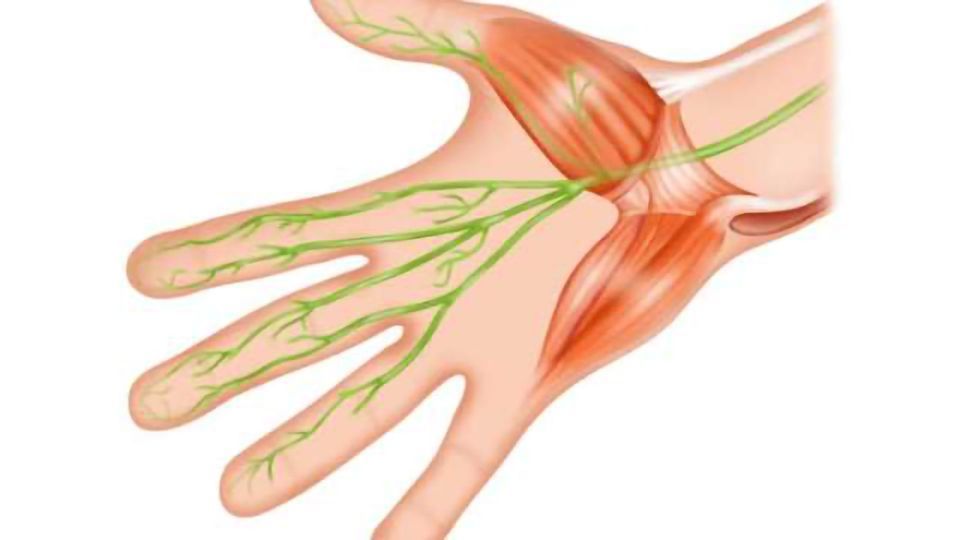Possible link between migraine and carpal tunnel syndrome.
Researchers looked into the prevalence of migraine headaches in patients who have nerve decompression surgery.
They discovered that people who have surgery to decompress a nerve at particular points on their bodies may be up to 70% more likely to get migraines than others who have the procedure elsewhere.

To determine whether nerve decompression can treat migraines, more research is required.
There may be pain and a loss of function when the nerves in the hands and arms contract around muscles and soft tissues. Between 5% and roughly 9% of the population are affected by various types of nerve compression in these places.
Surgery is frequently used to treat the illness and might result in full or partial symptom relief.
The muscles, blood arteries, and bone in the vicinity of the head’s surrounding nerves can also compress those nerves. Improvement or alleviation from migraine and headaches may result by decompressing these nerves.
What is Carpal tunnel syndrome?
Carpal tunnel syndrome is caused by compression of the median nerve. On the hand’s palm side, the carpal tunnel is a small opening encircled by bones and ligaments. Numbness, tingling, and weakness in the hand and arm are signs of median nerve compression.
Carpal tunnel syndrome can be caused by repetitive hand motions, health issues, and wrist morphology.
The tingling and numbness are typically reduced with appropriate care, and wrist and hand function is recovered.
Symptoms
The following list of signs and symptoms of carpal tunnel syndrome includes:
Feeling tingly or numb. Numbness and tingling in the fingers or hand may be apparent. Normal afflicted fingers include the thumb, index, middle, and ring fingers, but not the little finger. In certain fingers, you might experience something like to an electric jolt.
The wrist may feel the sensation before it moves up the arm. These symptoms may awaken you from sleep and frequently happen while you are holding the phone, newspaper, or steering wheel.
To try to alleviate their symptoms, many people “shake out” their hands. Over time, the numb sensation could persist continuously.
Weakness. You can feel weak in your hands and drop things. This can be because the thumb’s pinching muscles, which are similarly regulated by the median nerve, are weak or because the hand is numb.
Migraine and carpal tunnel syndrome
When the nerve that travels from the forearm to the palm of the hand is squeezed at the wrist, carpal tunnel syndrome develops.
In comparison to 16% of those without carpal tunnel syndrome, 34% of those with the condition get migraines, according to a cross-sectional study with 25,880 participants. It might be more effective to screen patients for the disorders if it is known whether nerve compression around the head is related to nerve compression in the hands and arms.
Researchers looked at how frequently people who had nerve decompression surgery for the hands and arms were diagnosed with migraines.
According to their findings, people who have particular types of nerve compression are more prone to suffer from migraine headaches. Not a part of the study, Dr. Chantel Strachan is an internist at ColumbiaDoctors and an assistant professor of medicine at Columbia University Irving Medical Centre in New York. She said.
“I wouldn’t jump to advise carpal tunnel release in every migraine patient. The choice to proceed with surgical treatment for nerve compression is specific to the patient and should be carefully considered with the patient’s medical care team.
Journal of Plastic and Reconstructive Surgery published the findings.
Most likely to experience migraine
Data from 9,558 patients who underwent nerve decompression surgery of the hands and arms between 2009 and 2019 were analysed for the study.
Participants were also evaluated by the researchers for the presence of migraine.
Of the subjects, the median nerve was decompressed in about 71% of cases. Surgery is done on the wrist to release pressure on the nerve, which lessens carpal tunnel syndrome symptoms.
A decompression of the ulnar nerve was done on about 14% of subjects. That is an elbow nerve decompression. 6.5% of patients underwent decompression procedures at various body locations.
In the end, the researchers discovered that people with multiple nerve decompression and median nerve decompression were respectively 30% and 70% more likely to experience migraines than people with ulnar nerve decompression.
Nerve compression and migraine
Dr. Sean Ormond, a specialist in anesthesiology and interventional pain management, did a study to learn more about the potential connection between nerve decompression and migraine.
He mentioned that there are a number of possibilities, but that the causes of nerve compression in the arms and hands and migraine are not entirely known.
“Both upper extremity nerve compression syndromes and migraine may share common risk factors, such as obesity, sedentary lifestyle, poor posture, or repetitive stress injuries,” stated Dr. Ormond.
The affected area may experience inflammation as a result of nerve compression. It is also recognised that inflammation contributes to the pathophysiology of migraines. The presence of inflammation in one place of the body may cause inflammation to spread throughout the body, potentially aggravating migraines, the doctor added.
Ormond observed that although further research is need to establish this, some people may be more prone to higher nerve compression and migraine due to a hereditary tendency.
According to Dr. Strachan, migraine sufferers may become more sensitive to pain due to nerve damage.
Limitations of the migraine study
Dr. Strachan pointed out that because the study was retrospective in nature, the results suggest association rather than causality.
She stated that different providers and their subspecialties, such as primary care, neurology, and pain, may have utilised different criteria to diagnose migraine.
The association between migraine and pain from nerve compression may be the consequence of other variables, as the researchers stated in their report that there is a general overlap across chronic pain disorders.
REFERENCES:
- https://www.medicalnewstoday.com/articles/the-possible-link-between-migraine-and-carpal-tunnel-syndrome
- https://www.utsouthwestern.edu/newsroom/articles/year-2015/migraine-carpal-tunnel.html
- https://www.ncbi.nlm.nih.gov/pmc/articles/PMC4387155/
- https://www.medpagetoday.com/neurology/migraines/51548
For Migraine disease medications that have been suggested by doctors worldwide are available here https://mygenericpharmacy.com/index.php?therapy=17